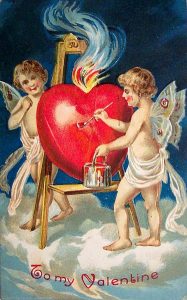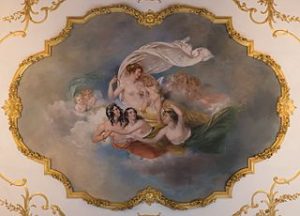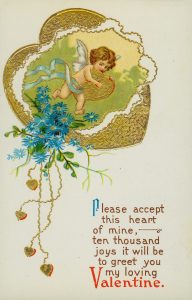 Did you notice? Before Holiday Decorations came down, Valentine’s Day cards were out. Once again a commemorative day many dread is upon us. It wasn’t always so.
Did you notice? Before Holiday Decorations came down, Valentine’s Day cards were out. Once again a commemorative day many dread is upon us. It wasn’t always so.
St. Valentine of Rome didn’t give flowers, candy, or cards. He gave soldiers the marriage sacrament. Claudius II declared soldiers couldn’t marry. He thought it reduced their fighting effectiveness. Valentine was also a Christian priest, at a time when Christians were persecuted.
Valentine soon found himself in prison. While awaiting his execution, Valentine healed Asterius, his jailor’s daughter. The night before he died in 269 BCE, Valentine wrote Asterius a letter, signing it “Your Valentine,” an act of love if not romance.
As a martyr of the early church, Valentine attained sainthood and is said to look after beekeepers, epileptics, travelers, engaged couples and happy marriages.
But Romance? That attribute entered February when Geoffrey Chaucer wrote that February 14, Valentine’s Saint Day, was the day birds and people find their mates. In his Parliament of Foules, composed in 1382, Chaucer wrote: “For this was on sent Volantynys day / when every foul cometh ther to chese his make.”
 The Valentine’s Day we recognize began in 18th century England. Lovers expressed their devotion with flowers, candy, and greeting cards. Heart shapes, doves, and winged cupids symbolized the day.
The Valentine’s Day we recognize began in 18th century England. Lovers expressed their devotion with flowers, candy, and greeting cards. Heart shapes, doves, and winged cupids symbolized the day.
I’ve never understood why cupids have such tiny wings relative to their body size. Artistic license, I suppose. Cupid’s mother is Venus, the Goddess of Love. The chubby cherub is the god of desire, erotic love, attraction and affection. Any person shot with his arrow is said to be filled with uncontrollable desire, otherwise known as lust, for the object of affection.
Valentine’s Cards became extremely popular in Victorian England, especially after 1840 when the Penny Post was introduced. Anyone could send a card for a penny, and postmen must have thought everyone did. In the days leading up to February 14th, postal carriers received a refreshment allowance to compensate for their longer days.
 Prior to 1810, most Valentines were made by the giver. As printing advanced and delivery prices dropped, commercial Valentines appeared, though many continued to make their own cards with materials from a stationer’s shop. Victorians displayed their cards and later kept them in scrapbooks. Looking through the books was a popular evening pastime.
Prior to 1810, most Valentines were made by the giver. As printing advanced and delivery prices dropped, commercial Valentines appeared, though many continued to make their own cards with materials from a stationer’s shop. Victorians displayed their cards and later kept them in scrapbooks. Looking through the books was a popular evening pastime.
Cards featured perforated laces, hand-tinted lithographs, poems, hearts, and references to the language of flowers.
 A bouquet of red roses remains a popular Valentine’s Day present. A red rose means “I love you.” Lilacs, on the other hand, refer to the first flush of love.
A bouquet of red roses remains a popular Valentine’s Day present. A red rose means “I love you.” Lilacs, on the other hand, refer to the first flush of love.
But don’t give your love yellow roses — they symbolize infidelity.
???
Illustrations from Wikimedia Commons
1909 Valentine Card, Public Domain.
Venus and Cupid Ceiling Painting by John Wood. Photo by DeFacto, Creative Commons Attribution.
1910 Valentine Greeting, Public Domain.
‘Please Accept this Heart of Mine,’ Public Domain.
Bouquet of Roses by Rohini, Creative Commons Attribution.
Victorian Valentine. Willow and Thatch.
Elizabeth Hanes. “6 Surprising Facts About St. Valentine.” History. Feb. 14, 2013.

Sandra Wagner-Wright holds the doctoral degree in history and taught women’s and global history at the University of Hawai`i. Sandra travels for her research, most recently to Salem, Massachusetts, the setting of her new Salem Stories series. She also enjoys traveling for new experiences. Recent trips include Antarctica and a river cruise on the Rhine from Amsterdam to Basel.
Sandra particularly likes writing about strong women who make a difference. She lives in Hilo, Hawai`i with her family and writes a blog relating to history, travel, and the idiosyncrasies of life.

